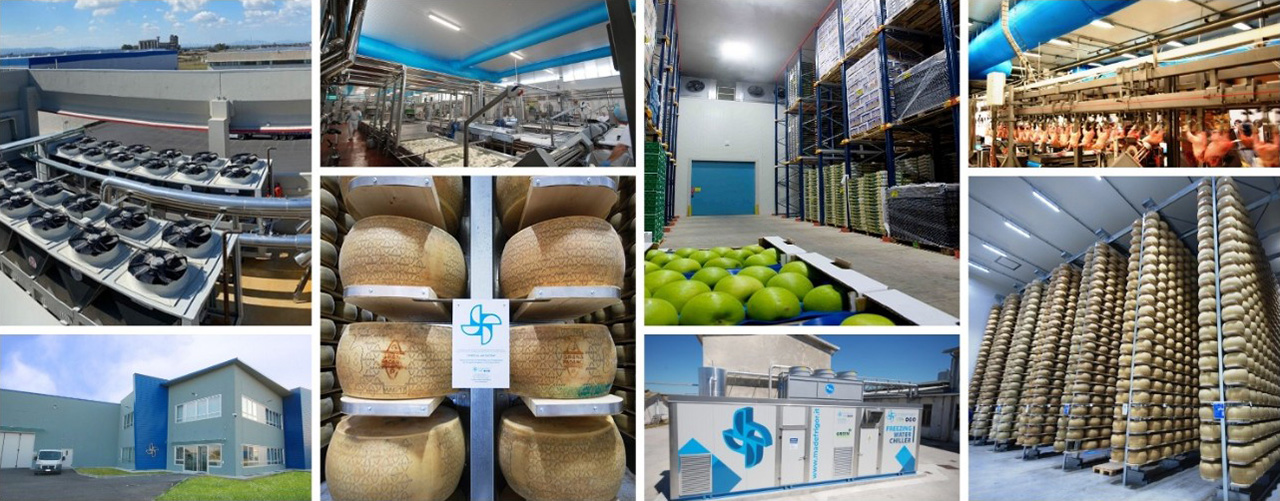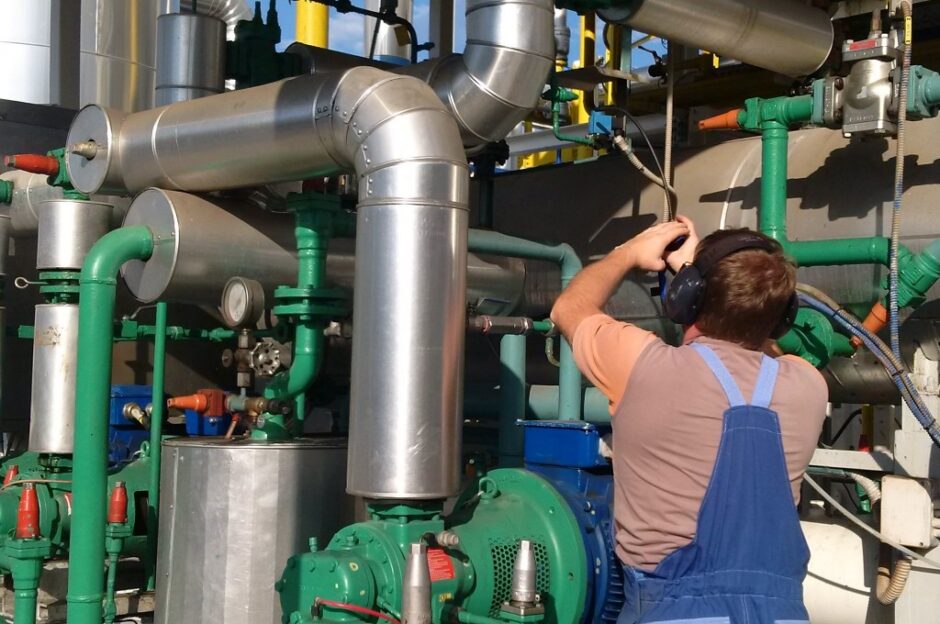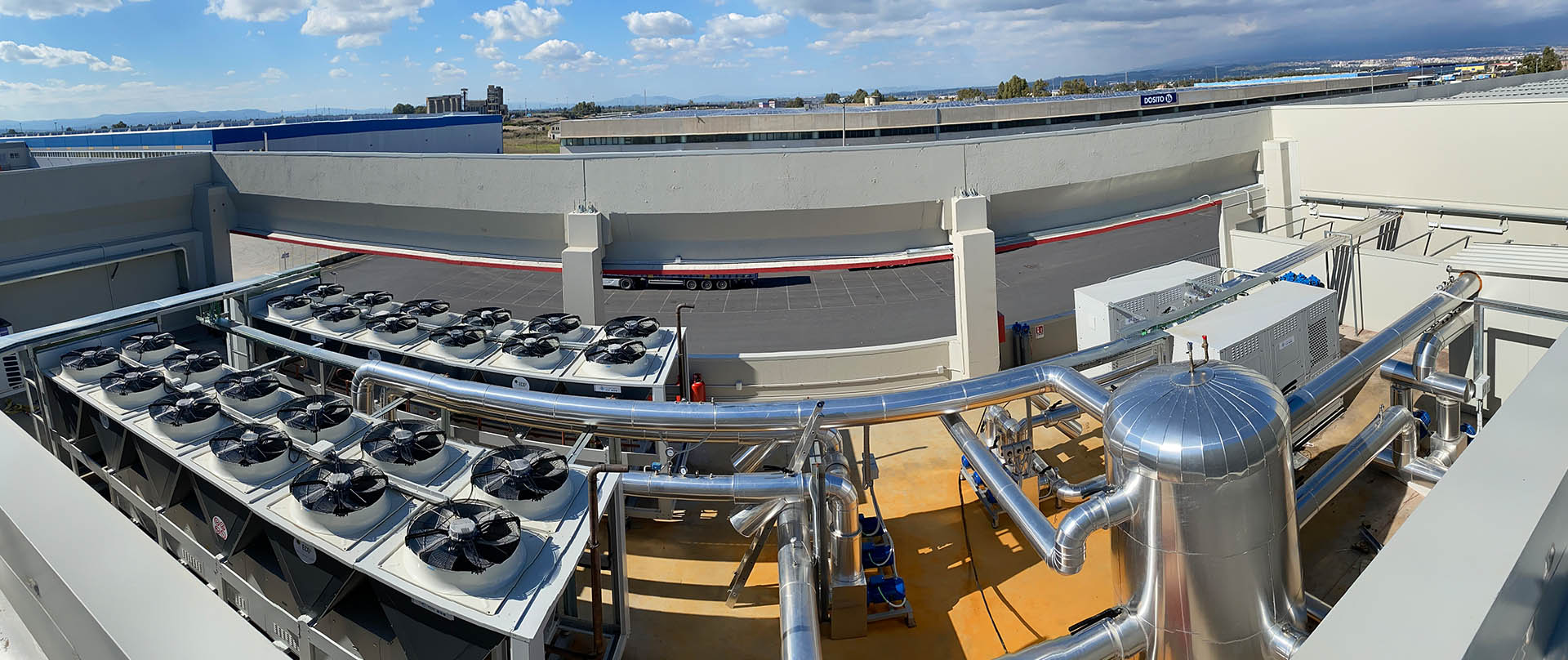
What types of equipment does madefrigor produce?
Behind Madefrigor there is half a century of experience in the field of industrial refrigeration. For agribusiness We build and install:
- Systems with glycolated water, cooled in the refrigeration plant (chiller) and distributed for the cooling of the rooms;
- Cheese and sausage maturing plants;
- Design and manufacture of clean rooms for any need;
- Air-conditioning systems for cutting rooms, portioning rooms and cheese graters to maintain a constant temperature from +8 ºC to +12 ºC;
- Rapid cooling systems for the food industry;
- Storage cells 0/+4 C for food;
- Frozen storage cells -20 system C;
- Process plants;
- Mortadella cooking cells;
- Cells for shading;
- Freezing tunnel.
In 2013 Madefrigor incorporated the CTM industrial refrigeration company: a leading manufacturer of packages and systems of industrial cold storage, with over 35 years of experience in the industrial, oil and gas, operating nationally and internationally.
With this operation we are able to realize for the industrial sector:
- Refrigeration units and chillers for all fully customized ‘turnkey’ industrial sectors from design to testing
- Refrigerated logistics facilities, refrigerated logistics terminals and temperature controlled warehouses
- Automatic and semi-automatic warehouses: raise the quality of processes, increase productivity and reduce operating costs
- Any type of refrigeration request in the ‘process’, ‘pharma’ and ‘process’
- Clean room design and production
- Technical assistance 24/7
What areas do we cover?
For more than 50 years Madefrigor is a leading company in the industrial refrigeration sector: we manufacture industrial refrigeration systems for the food, chemical/pharmaceutical sectors, oil & gas, with a service that starts from the design and arrives at the realization of turnkey plants.
Where can you find us?
Our legal and productive center is found in Rovello Porro, in Como. Throughout the national territory we have authorized technical assistance centers THROUGHOUT Italy and in Veneto of a commercial technical office. Here you can find Madefrigor offices around the world. Our full service qualified service network is available 24/7. Discover the service center closest to you.
After how long do we take action?

The design and construction capabilities of Madefrigor in the field of industrial refrigeration are recognized. In the post sale you can continue to rely on our professionalism, thanks to a qualified technical assistance service with the following characteristics of excellence:
- Availability H24/7: we are available 24 hours a day, 365 days a year
- Specialized services: the interventions are carried out by specialized personnel authorized to work on NH3, C02 systems and all refrigerators, with top quality materials
- Local assistance network: our assistance centers are distributed throughout the territory to intervene within 24 hours of the call
Why use CO2 in refrigeration?
It is estimated that a CO2 system allows up to 30% energy savings, compared to a traditional HFC system, and reduced operating costs. With high volumetric efficiency and large thermo physical properties, smaller pipes and compressors can be installed and less thick insulation.
CO2 does not reduce the ozone layer and compared to traditional refrigerants has an impact 4,000 times lower in terms of global warming, in addition these plants prove to be efficient. CO2 cascade systems offer high efficiency in all climatic conditions and transcritical systems are the ideal solution in mild climates.
Why use ammonia in refrigeration?
An ammonia plant (NH3) is very versatile and allows varying levels of refrigeration from 2 to freezing at -40 ºC. It also guarantees a refrigeration performance much higher than other fluids that translates, with the same cooling power, in a lower energy expenditure, especially for large plants.
This natural fluid, in fact, has undisputed advantages in terms of energy efficiency, but it also has a high toxicity and flammability, so there is recourse to plants that increase plant costs, avoiding direct expansion and in combination with water glycol or carbon dioxide. On the other hand, the energy savings and ease of maintenance of ammonia systems exceed the possible higher initial costs.
How can I save energy with my PLANT?

As a specialist in industrial refrigeration, Madefrigor designs and manufactures state-of-the-art systems capable of bringing added value at the best cost, combining the highest performance at low operating costs with obvious energy savings.
It is a matter of thinking about refrigeration according to a more sustainable concept, not only because of the widespread environmental concerns, the significant energy and emissions savings that result and the increasingly stringent regulations, but also for the strong sense of social responsibility that has always characterized our activity. In particular, we have focused our attention on climate-neutral refrigerants, such as carbon dioxide (CO2), ammonia or propane, which are environmentally friendly and at the same time save energy.
What is the difference between freezing and deep freezing?
The difference between freezing and freezing lies mainly in temperature and processing time. The deep freezing process can only take place at industrial level through the use of special equipment. Frozen food, however, does not require the use of special equipment but a simple household freezer.
Fresh food, in order to be deep frozen, must be brought to temperatures below -18 ºC very quickly. The cooling rate produces, in fact, the formation of micro-crystals that do not alter the chemical structures of the food, thus avoiding the loss of its original nutrients and organoleptic substances. For this reason, deep frozen foods are a valuable alternative to fresh food. Unlike a frozen product, a deep frozen food product meets certain fixed rules: the European Union has promoted Directive 89/108/EEC transposed in Italy with D.L. n.100 of 1992, which regulates the entire sector of frozen food.
Freezing, on the other hand, is created by placing a food in the freezer, in particular at a temperature ranging from -7 The process is slower and involves the formation of large ice crystals that can cause damage to the biological structure of food, causing the loss of some organoleptic and nutritional values once thawed the product. In addition, freezing completely blocks the activity of live cells and enzymes that continue to “work” in frozen food, contributing to the deterioration of the original quality of the product.
What is the difference between LT and HT cells?
Positive temperature (HT) cold rooms are suitable for storage; negative temperature (LT) cold rooms are intended for pre-cooling, refrigeration, freezing and deep freezing. HT cells have panels with a thickness ranging from 6 to 12 cm which depends on the location and characteristics of the same cell. In LT cells, however, the thickness can vary from 10 up to a maximum of 24 cm.
HT/LT refrigerated tunnels can be positive, negative or combined with two engines in one body. They are designed for rapid temperature reduction or freezing of food, specific for pastry, fish, vegetables, ice cream, meat or fish. Madefrigor builds customized LT/HT cells, depending on the degree of insulation, size and use.
